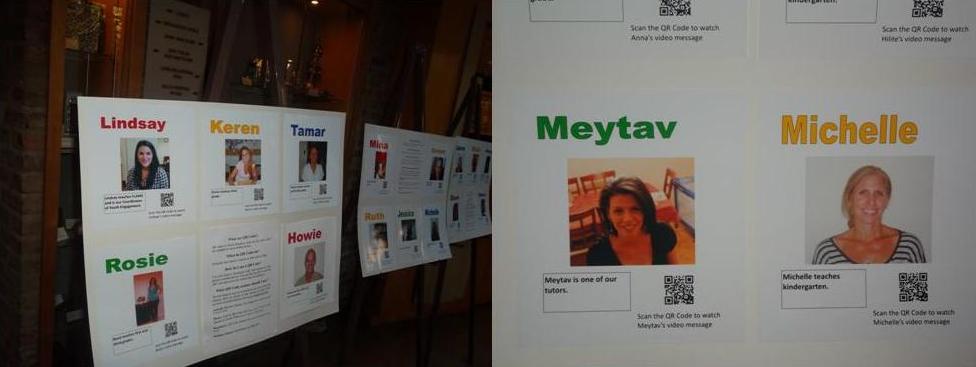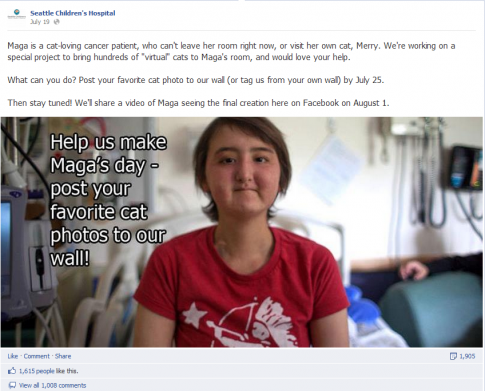You know how it’s always the best TV shows that get cancelled? Even though they may not be the most popular, they’re always the ones with the most compelling characters and the best writing, right? Well, “Project Mishpacha” was kind of like that for me.
A couple years ago, when I was living in Chicago’s Lakeview neighborhood, I was privileged to be a part of the Anshe Sholom B’nai Israel community. They started a program called “Project Mishpacha” with the help of the Legacy Heritage Innovation Project back in 2009. No, it was not canceled. In fact, it’s still going strong. It was that I moved to Brooklyn, so it was canceled for me, which made me feel like I feel when my favorite TV show goes off the air.
Basically, here’s how to make your own Project Mishpacha in just 5 steps:
- Get yourself a diverse congregation. I mean diverse in just about every sense of the word; age, Jewish background, hashkafa (worldview), race, you name it. One suggestion for doing this is being a warm and welcoming shul. Oh sure, we’re all “warm and welcoming” shuls, but no, I really mean it. This is a group of people with stellar leadership who go out of their way to invite friends and strangers alike into their lives. I could tell some incredible stories about just this aspect of ASBI alone, but I don’t want to get off track. Suffice it to say that the kindness of the rabbi and his family was enough to inspire an entire musical genre, but that’s a story for another time.
-
Ask for volunteers to sign up for the program. For a truly warm and welcoming congregation, this should be easy. All you need to tell them is something along these lines:
- As is natural in any large group of people, cliques form. That’s what’s happened in our shul. Teens hang out with teens, family people hang out with family people, artists hang out with artists, empty-nesters hang out with empty-nesters, etc. While there’s nothing intrinsically wrong with that, we think it’d be neat for us to become a “connected congregation.” Not in the sense that we become interconnected with other congregations (because we are actually already doing a pretty good job of that), but in the sense that we become more INTRA-connected, and get to know the people in our own community even better than we already do. Let’s break open our cliques and see what happens.
- Get a shadchan (matchmaker). Not the “find me a find, catch me a catch” kind of shadchan, but kind of. At ASBI, it’s the rabbi’s wife. She makes it her business to know every single member by name, what their likes and dislikes are, their marital status, occupation, and all information relevant to connecting a person to the community. And if she’s reading this she might disagree, but believe me, it sure seems that way. Her job in “Project Mishpacha” is to help form the artificial family units, or “Mishpachot.” Depending upon the Mishpacha, the shadchan might need to find groups of people with similar interests, or specifically choose people who have very little or nothing in common at all. The point is that while she does not need to necessarily be the rabbi’s wife, she does need to really know everyone. From what I’ve been told, it’s a lot like the job a network weaver does.
- Create opportunities for each Mishpacha to do things together. Things like Shabbat potluck meals, Chanukah parties, and mitzvah projects. Some Mishpachot were themed, like the one where playing board games was a common interest. I will add from personal experience that if your Mishpacha actually does hang out together, it accomplishes the main goal beautifully.
- Stand back and watch. Seriously. It’s important not to get too involved in the Mishpachot once they’re formed – kind of like how you’d treat the affairs of someone else’s family. I mean, be attentive to their needs and all, but one of the beautiful things about “Project Mishpacha” is that there is no one person who’s in charge. Being a part of a Mishpacha shouldn’t mean that you feel the need to answer to anyone. Sometimes the Mishpacha relationships don’t work out, and (here’s the tricky part:) that’s just fine – it’s not a “real” family after all. But when they do work out, it’s an awesome experience that enriches everyone.
“Project Mishpacha” is no metaphor. It’s literally a project, an experiment in Jewish communal behavior. Also, it requires the creation of artificial family units. If you start with the premise that we’re all already family in the larger sense, being Jews and all, then take it to the next logical step which is acting like it and actually treating other Jews like family. What’s the next step after that? Well, let’s play it out, said the ASBI leadership. That’s what “Project Mishpacha” is.
Not every congregation can do this; I hope I’ve made that clear. For example, not every shul has a shadchan, and even though we all say we are, not every shul is warm and welcoming. And in the end, there are definitely reasons not every congregation should have a “Project Mishpacha.” It was not 100% successful by any measure. Some “Mishpachot” didn’t get along very well. Some got along, but chose not to participate in any of the activities. All but one have chosen to dissolve their “Mishpachot” at the end of each year in favor of trying a new one (which, admittedly, could also be construed as a huge success if you think about it). Many have tried it out and realized it’s not working for them, so they wind up leaving “Project Mishpacha” altogether. But in the opinion of this emeritus of “Mishpachat Ir HaRuach,” (“The City of Spirit Family” or “The Windy City Family”) its pros way outweigh its cons. I now have relationships with people I probably would never have had were it not for “Project Mishpacha.” I probably would have just stayed with my little clique. Not only did I feel more connected with my Mishpacha, but also with the ASBI congregation as a whole.
The end of the story is that I now live in Brooklyn, which while very Jewish in some ways, can sometimes be culturally light years away from the warmth I’ve come to associate with what’s truly Jewish. I hope my fellow Brooklynites don’t take offense to that; it’s just that we Midwesterners take great pride in our hospitality. I miss that about the Midwest, and I still keep in touch with my friends and some of my old Mishpacha from ASBI. And I’m happy to report that I’ve found an incredibly (and truly) warm and welcoming congregation or two in my neck of the woods. I haven’t found another “Project Mishpacha” out here, but I’m okay with that – for now. New York City is monstrously (even sometimes overwhelmingly) large in terms of the Jewish options available to someone like me, and right now I’m enjoying the experience of exploring what it is that gives the East Coast its own flavor of “warm and welcoming.” The Chabad community in Crown Heights is just as supportive and nurturing as the Jewish Renewal community I met at the Isabella Friedman Jewish Retreat Center, and everyone in between. It’s just different from the Midwest is all.
So leaving the Midwest and “Project Mishpacha” was for me kind of like when “Firefly” was canceled, and moving to Brooklyn’s myriad Jewish communities is like when “Jericho” started. I guess sometimes the good shows need to end in order to make room for great new ones. It’s good to be that kind of excited again.
Alan Sufrin is a musician, producer and Jewish educator. He is half of the 'biblegum pop' duo Stereo Sinai, and has previously worked at the Chicago Coalition of InterReligious Leanring, the Boar dof Jewish Education of Metropolitan Chicago, Anshe Sholom B'nai Israel synagogue, and the University of Chicago Hillel. He has, if you hadn't guessed, recently moved from Chicago to Brooklyn, NY.
This post is part of a blog series on Connected Congregations being curated by Darim Online in partnership with UJA Federation of New York. Through this series, we are exploring what it means for synagogues to function as truly networked nonprofits. Connected Congregations focus on strengthening relationships, building community, and supporting self-organizing and organic leadership. They are flatter and more nimble, measure their effectiveness in new and more nuanced ways, allocate their resources differently, and use technology in a seamless and integrated way to support their mission and goals. We hope these posts will be the launching pad for important conversations in our community. Please comment on this post, and read and comment on others in the series to share your perspective, ideas, work and questions. Thanks to UJA Federation of New York for supporting this work.






